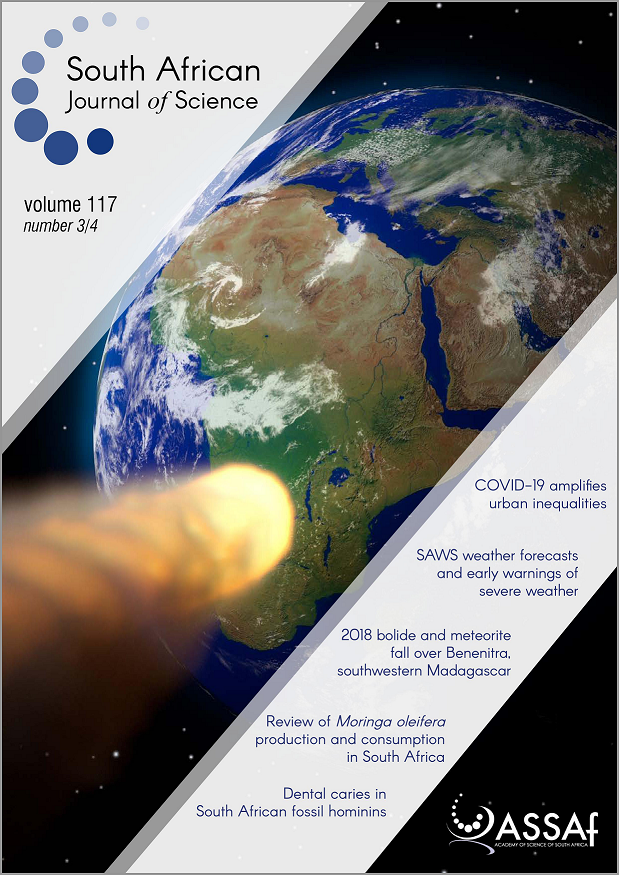Coelacanth discoveries in Madagascar, with recommendations on research and conservation
DOI:
https://doi.org/10.17159/sajs.2021/8541Keywords:
coelacanth distribution, Western Indian Ocean, Onilahy marine canyon, coelacanth capture, gillnet fishing, jarifa, Latimeria chalumnaeAbstract
The presence of populations of the Western Indian Ocean coelacanth (Latimeria chalumnae) in Madagascar is not surprising considering the vast range of habitats which the ancient island offers. The discovery of a substantial population of coelacanths through handline fishing on the steep volcanic slopes of Comoros archipelago initially provided an important source of museum specimens and was the main focus of coelacanth research for almost 40 years. The advent of deep-set gillnets, or jarifa, for catching sharks, driven by the demand for shark fins and oil from China in the mid- to late 1980s, resulted in an explosion of coelacanth captures in Madagascar and other countries in the Western Indian Ocean. We review coelacanth catches in Madagascar and present evidence for the existence of one or more populations of L. chalumnae distributed along about 1000 km of the southern and western coasts of the island. We also hypothesise that coelacanths are likely to occur around the whole continental margin of Madagascar, making it the epicentre of coelacanth distribution in the Western Indian Ocean and the likely progenitor of the younger Comoros coelacanth population. Finally, we discuss the importance and vulnerability of the population of coelacanths inhabiting the submarine slopes of the Onilahy canyon in southwest Madagascar and make recommendations for further research and conservation.
Significance:
- The paper contributes significantly to knowledge of the distribution and ecology of the Indian Ocean coelacanth, Latimeria chalumnae.
- The paper provides the first comprehensive account of Madagascar coelacanths and demonstrates the existence of a regionally important population and extensive suitable habitat, correcting an earlier hypothesis that coelacanths in southwest Madagascar were strays from the Comoros.
- The results have application in the study of the evolution, biology, ecology and conservation of the species.
- The significant threat posed by gillnet fishing to coelacanths and other species is highlighted as are the negative effects of the shark-fin trade.
- The paper emphasises the importance of the Onilahy marine canyon in southwest Madagascar as an especially important habitat and provides the basis for the development of a national programme of research and conservation.
Published
Issue
Section
License

All articles are published under a Creative Commons Attribution 4.0 International Licence
Copyright is retained by the authors. Readers are welcome to reproduce, share and adapt the content without permission provided the source is attributed.
Disclaimer: The publisher and editors accept no responsibility for statements made by the authors
How to Cite
- Abstract 14720
- PDF 1597
- EPUB 174
- XML 200












.png)